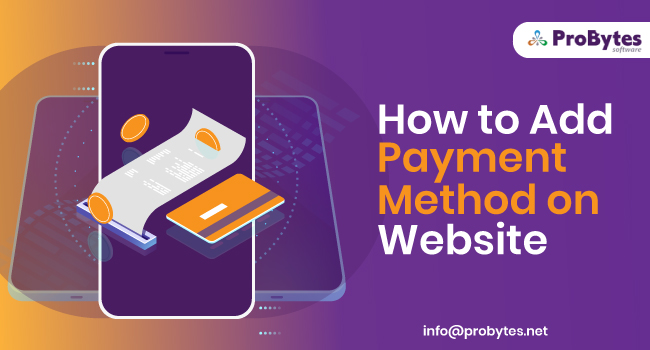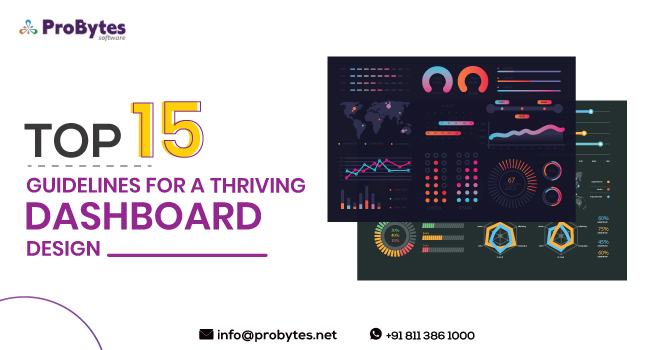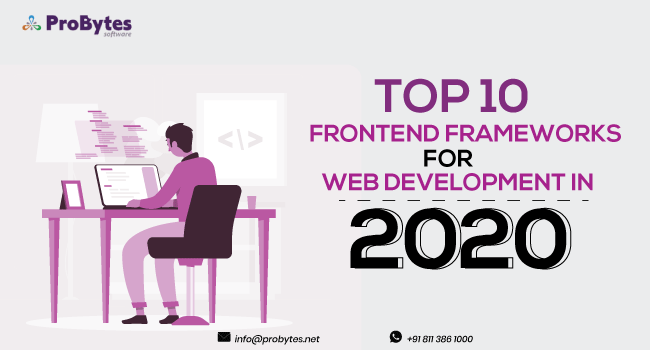Blog Category(283 Blogs)
Web Development Vs Web Design – Want To Know The Difference?
Web designing and Web development are used interchangeably so often that one forgets that they are technically two different functions. Adding to the confusion is the increasing number of businesses that promote themselves as Web Development Company as well as Web Designing Company.
This blog post on web development Vs web design will delve into the two realms of website creation and elaborate on the differences between the two.
Web Development Vs Web Design
Before we go into details about web development and web designing, let’s take a quick look at the major differentiators between the two aspects of website building.
| Web Design | Web Development |
| Deals with the aesthetics of the website – the look and feel | Deals with building the backbone of the website –factors and attributes that contribute to the function and performance of the website |
| Transform a concept into a visually-appealing layout | Transform the design into a functional website |
What is Web Designing?
As described above, web designing involves creating the look and feel of the website. A web designer creates a wire frame or layout based on the client’s preferences and specifications.
Read Also: Top 10 Web Development Companies In India
The wireframe will give a general idea of how the final page will look like. Once all the stakeholders approve the wireframe, sketches and mock-ups are created. These sketches and prototypes will give a precise picture of the final product.

From the size and type of font to the colour palette of the web page, every design aspect is finalised during these stages. All these design aspects play a vital role in making the website attractive to the visitor.
Aspects of Web Designing
The process of web designing doesn’t simply end in creating a mock-up or choosing a background theme and typography. The various aspects of web designing include:
- Creating a website format and layout that delivers the best user experience
- Building the website prototype
- Working on the graphic designs
- Coordinate with website developers to convert design ideas into features
- Creating web designs using CSS and HTML
Apart from these common tasks, specialist web designers focus on specific design tasks such as:
User Experience (UX) – It involves creating a web interface based on audience profiles and demographics.
User Interface (UI) – It involves building a foundation to improve user experience by incorporating elements for easy site navigation.
Visual Design – It combines both the elements of user experience and user interface to conceptualise the website’s unique brand and style.
Elements of a Web Design
While creating the visual design, web designers focus on the following design principles:
Balance – This principle elaborates on the need to use the right proportion of small and large elements, dark and light colours, and other elements to create a balanced web design.
Contrast – This principle is based on the colour theory that states that complementary or contrasting colours are placed opposite each other. Designers use contrasting colours, textures, shades, shapes and other elements to create an attractive page
Consistency – It is a critical design principle that ensures consistency of colour, design and layout across all the web pages of the website. It also ensures consistency with the brand image, logo and mobile app.
Unity – This principle involves building a relationship among the different elements of the web design to create a cohesive theme that grabs the attention of the website visitor.
Emphasis – This principle involves “emphasizing” on certain design elements to make it stand out on a web page to grab the attention of visitors.
Design Tools for Web Designing
The commonly used tools for web designing are:
- Illustrator
- Sketch
- Dreamweaver
- AI
- Adobe Photoshop
What is Web Development?
Web development involves the use of codes to convert a static layout created by the designers into a dynamic functional website. There are two types of web developments – front-end development and back-end development.
Development that includes both front end and back end is known as full stack development. Front end development or building the user/client side of the website involves creating the interface and building the interaction between the backend of the website and the user.
Read Also: Top 10 Exceptional Movies and Documentaries for Web Designers
Front end web development bridges the technical aspects of web development with the aesthetic elements of web design. The backend of the website is the hardcore technical aspect of the website, or in other words, the backbone of the website on which the rest of the elements are woven around.

Front end web development bridges the technical aspects of web development with the aesthetic elements of web design. The backend of the website is the hardcore technical aspect of the website, or in other words, the backbone of the website on which the rest of the elements are woven around.
Front End Website Development
JavaScript (JS), Hypertext Markup Language (HTML) and Cascading Style Sheets (CSS) are the three major programming languages used to create the front end of the website.
It also includes using content management systems (CMS) like Joomla, Drupal or WordPress to streamline the entire development process and ensure seamless functionality.
Bootstrap, jQuery, and React are some of the frameworks used in creating the front end of a website. It also includes use of styling pre processors and JavaScript libraries.
The popular front end web development tools are
- jQuery
- Angular JS
- Sass
- Sublime Text
- Chrome Developer Tools
- GitHub
- Twitter Bootstrap
Back End Website Development
The backend of the website is also known as the server side of the website and involves gathering accurate data based on the actions happening on the front end. It determines the architecture of the website and focuses on the script and the database.
The server side is coded using programming languages such as Java, Python, PHP, ASP.NET, Node JS, C#, C, C++, and more while the server database is built using MySQL, Oracle, SQL and Mongo.
The tasks involved in building the backend of the website are:
- Writing codes for the server and database interaction
- Ensuring server-side code is secure and error free
- Optimizing server-side code to handle the large volumes of traffic that the website expects to have
- Implementing algorithms
The essential tools for backend website development are:
- Programming languages such as PHP, Perl, Java, Ruby, Python, Erlang, Node JS and more
- Web servers such as Nginx and Apache
- Database management systems such as MongoDB, PostgreSQL and MySQL
- Local development environment such as XAMPP, Wamp Server and Laragon to run and test codes before making them live
- Website performance testers such as Full-Page Load Tester and Google Page Speed Tester
- Microservice platforms such as Kubernetes and Docker
Many small and medium businesses that want to create an online portal look for web development and web designing services. Whether you are looking to build a new website or revamp your existing online portal to give it a new life, you can consult us.
Read Also: 25 Stunning Website Designs That Will Blow You Away
We have in-depth experience in website designing and development and can give you the best value for your investment. Contact us right away to create a stunning website for your business.
We have in-depth experience in website designing and development and can give you the best value for your investment. Contact us right away to create a stunning website for your business.

 Python
Python Magento
Magento Odoo
Odoo How To
How To How Much
How Much Yii Development
Yii Development Core PHP
Core PHP Prestashop
Prestashop Latest News
Latest News Education
Education Web Design
Web Design Business
Business Ecommerce
Ecommerce Travel
Travel Banking and Finance
Banking and Finance Web Development
Web Development Ruby On Rails
Ruby On Rails Joomla Development
Joomla Development Ecommerce
Ecommerce Magento Development Services
Magento Development Services Hire a Developer
Hire a Developer Web Crawling Services
Web Crawling Services












